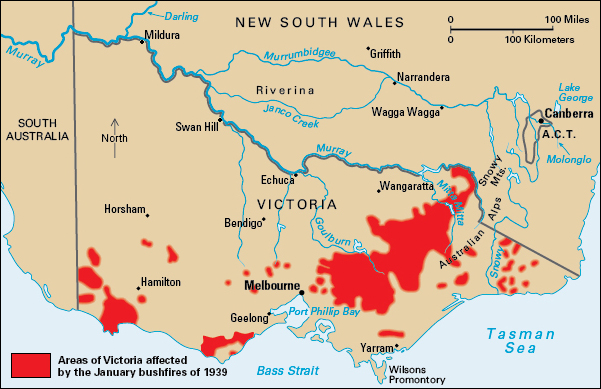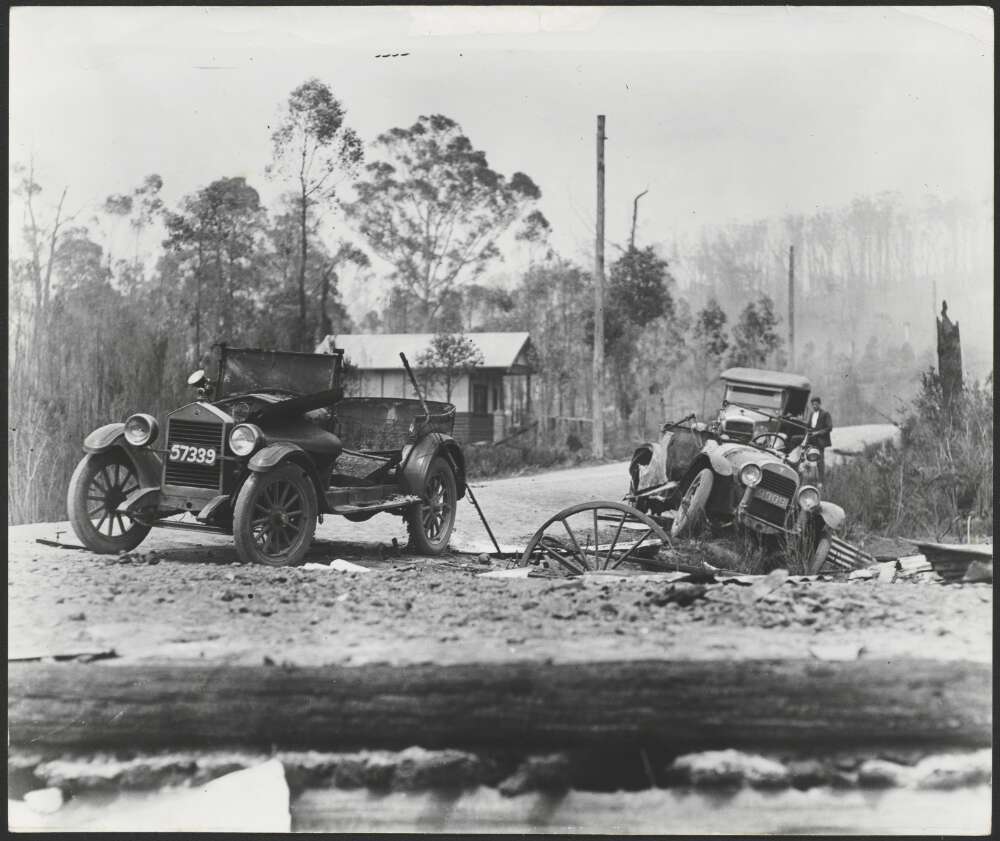Black Friday bushfires were among the deadliest wildfires in Australian history. The fires started in Victoria in December 1938, with the worst of the burning in January 1939. Beginning around Melbourne, the flames formed a fire front that reached as far as the state’s northeastern mountains and southwestern coast. The fires also burned other regions, including the Australian Capital Territory, New South Wales, South Australia, and Tasmania. 
Dangerous fire conditions in Victoria had been building over several years of drought. Several bushfires, common to the region in the summer, began burning in December 1938. The area was also affected by a serious heatwave, with record-high temperatures in early January. The situation was made worse by the fire management standards of the time. Many people had become used to lighting fires, whether for camping, clearing land, or other purposes. Despite the increasingly dry conditions, little attempt was made to regulate these fires or control the bushfires.


The situation led to a major disaster in the first weeks of January, when strong winds swept through Victoria. The winds caused the fires to spread rapidly. By January 9, fires were burning through at least a dozen communities. Within days, the fires had reached the Great Dividing Range. The peak of the disaster came on Friday, January 13, later known as Black Friday. On that day, multiple towns, including Noojee and Woods Point, almost or completely burned to the ground.
By the time the disaster was over, 71 people had been killed. Hundreds of buildings, along with 3.7 million to 4.9 million acres (1.5 million to 2 million hectares) of land, were badly damaged or destroyed. An investigation found that much of the disaster had been caused by poor fire management. Its report recommended new standards to increase awareness of and prevent similar disasters. Many of the recommended changes are still used by modern firefighting agencies in Australia.
